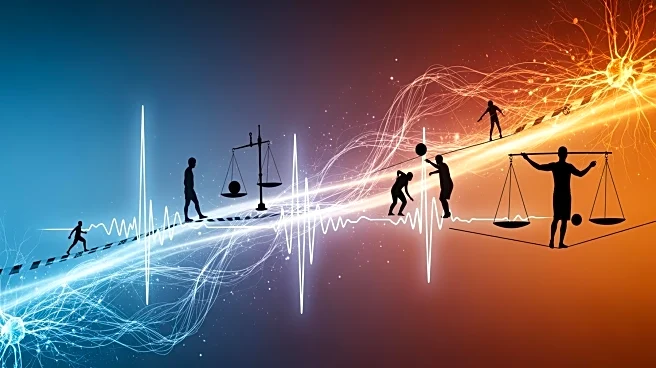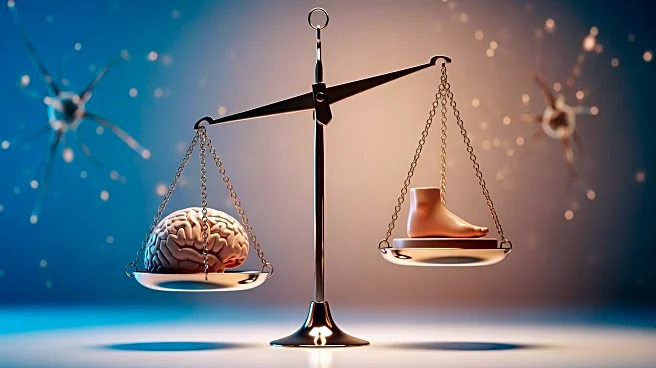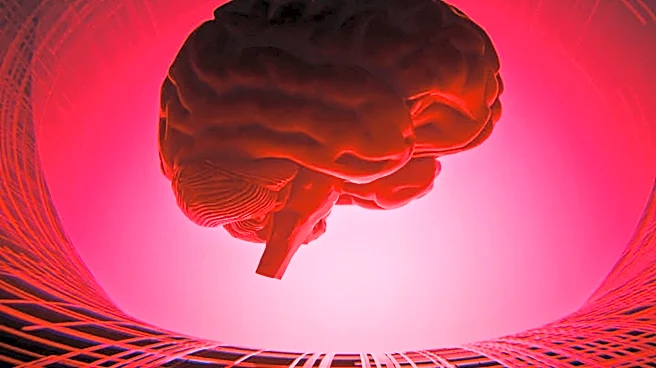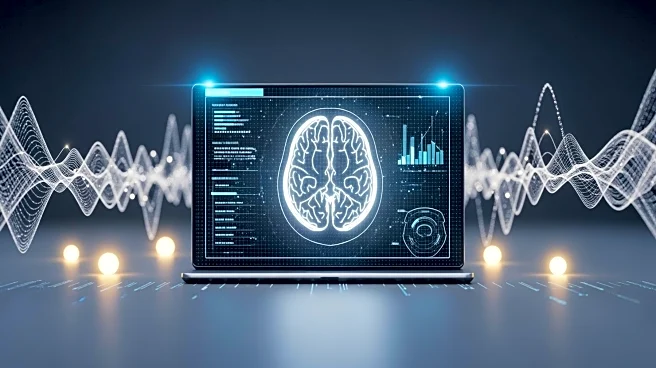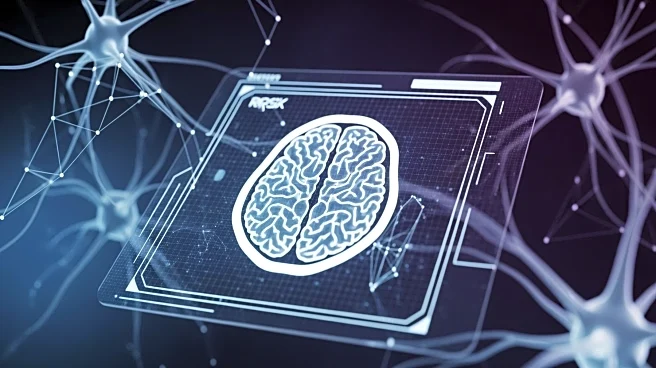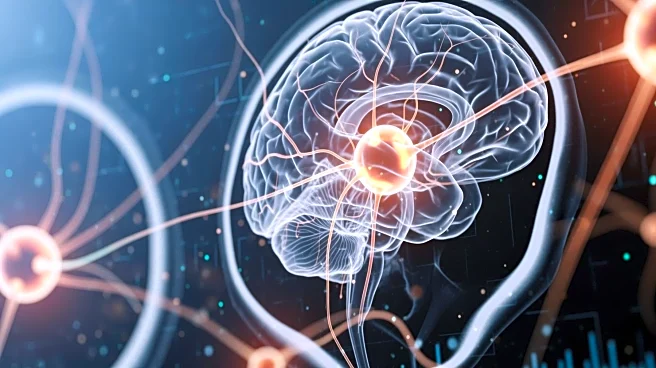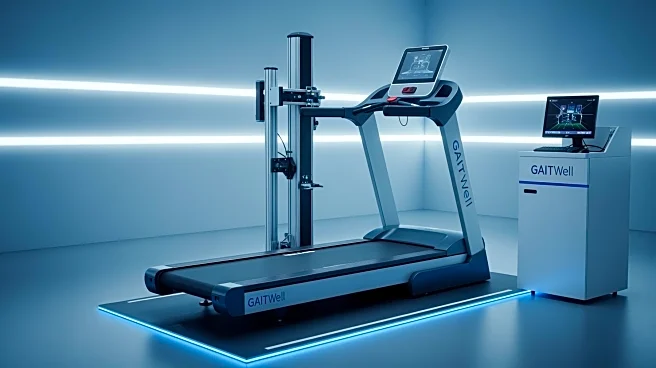What's Happening?
A recent study conducted by Leipzig University investigated the relationship between somatosensory-evoked potentials (SEP), resting-state theta power, and acute balance performance. The study involved
25 healthy participants who engaged in regular exercise and had no prior experience with slacklining. Participants underwent SEP and EEG measurements followed by slackline-specific balance tasks. The research aimed to understand how neural responses to sensory stimuli and cortical network dynamics influence postural control. The study found that SEP amplitudes and theta power spectral density could provide insights into balance performance, with implications for understanding the integrity of somatosensory pathways and synaptic transmission facilitation or inhibition.
Why It's Important?
This study is significant as it contributes to the understanding of how neural mechanisms affect physical balance, which is crucial for developing interventions in sports science and rehabilitation. By examining the dynamics of cortical networks and somatosensory pathways, researchers can better understand how to enhance balance and postural control in individuals. This has potential applications in improving athletic performance and designing rehabilitation programs for those with balance impairments. The findings could lead to advancements in neurophysiological assessments and targeted therapies that enhance motor function and prevent injuries.
What's Next?
Future research may focus on expanding the sample size and including participants with balance impairments to explore therapeutic applications. Researchers might also investigate the effects of different types of physical activities on SEP and EEG measurements to determine optimal training regimens for improving balance. Additionally, the study could pave the way for developing wearable technology that monitors neural responses and provides real-time feedback to enhance balance training.
Beyond the Headlines
The study highlights the ethical considerations of conducting research with human participants, ensuring informed consent and adherence to ethical guidelines. It also underscores the importance of interdisciplinary collaboration between neuroscience and sports science to address complex physiological questions. Long-term, this research could influence cultural perceptions of physical fitness and the integration of neurophysiological insights into everyday health practices.
